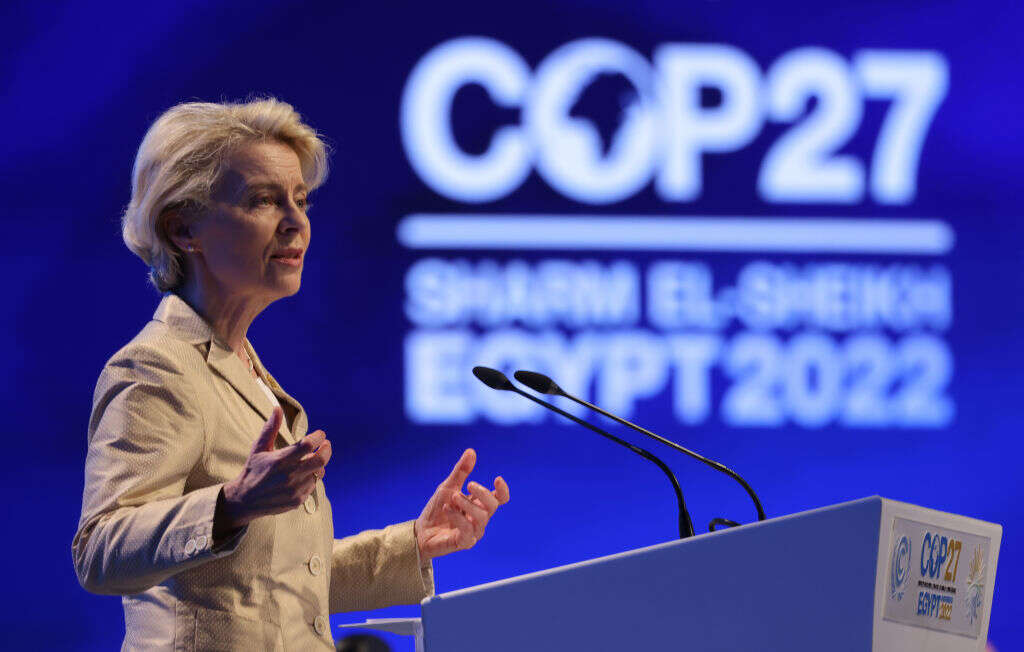

- Due to a failure of political leadership at Cop27, sticking to a 1.5°C trajectory remains alive in name only.
- Have political leaders tacitly admitted climate mitigation is no longer a viable political priority?
- If so, could this affect the flow of capital into climate mitigation?
“Climate finance markets are subject to deep information asymmetry, risk aversion and herd behaviour, all of which result in inefficient choices.”
This is the conclusion the UN draws about the decision-making flaws buried within the mindset of financial markets. The UN suggests strong policy leadership in the form of taxation, intervention, spending and regulation – what it dubs “nudges” – is essential to unlocking more private capital to mitigate climate change.
This nugget formed part of a key set of conclusion outlined in a detailed report called The Emissions Gap Report 2022. Published just before Cop27 commenced, it is a clarion call for collective political action to mitigate the worst excesses of climate change.
The report detailed how far we need to go to limit global warming to 1.5°C, the scientifically-agreed benchmark to ensure climate change adaption is manageable. By 2030, we must cut greenhouse gas emissions by 45% to keep within touching distance of this target. Based on current commitments, we are nowhere near achieving this – not even remotely.
In fact, assuming no further policy change from major polluting countries, we are heading towards a 2.8°C rise over the course of this century, something many scientists believe could prove catastrophic to human life. Limiting it to just 2°C alone spells serious trouble.
Sadly, the UN’s warning was not heeded. On mitigation, Cop27 proved a dramatic disappointment. Due to a failure of political leadership, sticking to a 1.5°C trajectory remains alive in name only.
Ursula von der Leyen, president of the European Commission, summed it up succinctly: “[Cop27] has not delivered on a commitment by the world's major emitters to phase down fossil fuels, nor new commitments on climate mitigation.”
Instead, the big headline deal from the 2-week event is that developed countries have agreed to create a fund to help rescue and rebuild poorer countries stricken by climate-related disasters. Well-needed, no doubt, but not the primary deal many were hoping for.
Cop27: Political priorities
What we may have just witnessed at Cop27 is the tacit admission climate mitigation is no longer a viable political priority, with leaders accepting global consensus will only be achieved when focusing on climate adaptation – finding ways to live with a warmer planet.
Many experts privately fear this looks to be the case. If so, it is important to consider the huge implications such a shift would have. If the political will is not there, could this affect the flow of capital into climate mitigation? It is naïve to assume it will suddenly divert to adaptation, that’s for certain.
Who will pay for climate adaption?
Based on current UN estimates, adapting to the climate crisis – such as building sea walls or creating drought-resistant crops — could cost developing countries anywhere up to $340bn annually over the next decade. This number could surge to just over half a trillion by 2050 if climate change accelerates.
We know it can’t and won't be developing nations alone who will pay for this; they simply can’t afford to. According to the IMF, 60% of low income countries are struggling to pay off their debt. For some, like Barbados, increased debt levels are largely down to having to finance the consequences of natural disasters.
So where could the money come from then?
We also know multilateral development banks and regional development banks play a useful role in stimulating new markets, but their clout within global capital markets is relatively small and decreasing.
Clearly, the private sector will be needed to play a significant role in financing increasing costs of adaption. But, given policy makers have only just managed to convince some of the world’s largest private asset owners to give mitigation the attention it deserves (in fact, the vast majority of global climate finance is directed towards it), how easy would it be to get enough to shift focus again?
It’s hard enough for lenders to move away from financing bankable fossil fuels. Although the Climate Bonds Initiative forecasts that over $1trn will be raised using green bonds in 2023 alone, when it comes to lending, the world’s 60 largest banks alone provided $4.6trn in fossil fuel financing in the six years since the adoption of the Paris Agreement, with no sign of meaningful decline.
Is climate adaptation financially viable?
More to the point, adaptation and loss of damaged investments are widely acknowledged to offer far less incentive for lucrative returns.
The public equity markets, albeit nimbler and more responsive, have yet to evidence their full-throated support for green technology, and may prove even less enthusiastic when it comes to adaptation. In 2021 the market cap of the top-ten listed renewable energy companies globally was around $215bn. To put this in perspective, market capitalisation of major technology stocks reached $9trn by 2021.
The UN understands the problem. In The Emissions Gap Report 2022, the UN states:
“Most actors in the financial system only align their activities with the aims of the Paris Agreement to a limited extent compared to the total scale of their activities. For actors to do more and move faster to address the climate crisis, both individually and as a system, external forces of climate policy-setting by governments as well as financial regulators and supervisors are necessary.”
Sadly, the lack of policy conviction as witnessed at Cop27 may only serve to confuse financial markets further. Given their general recalcitrance to act with pace and purpose, we may be in for a very difficult period for climate funding ahead.






